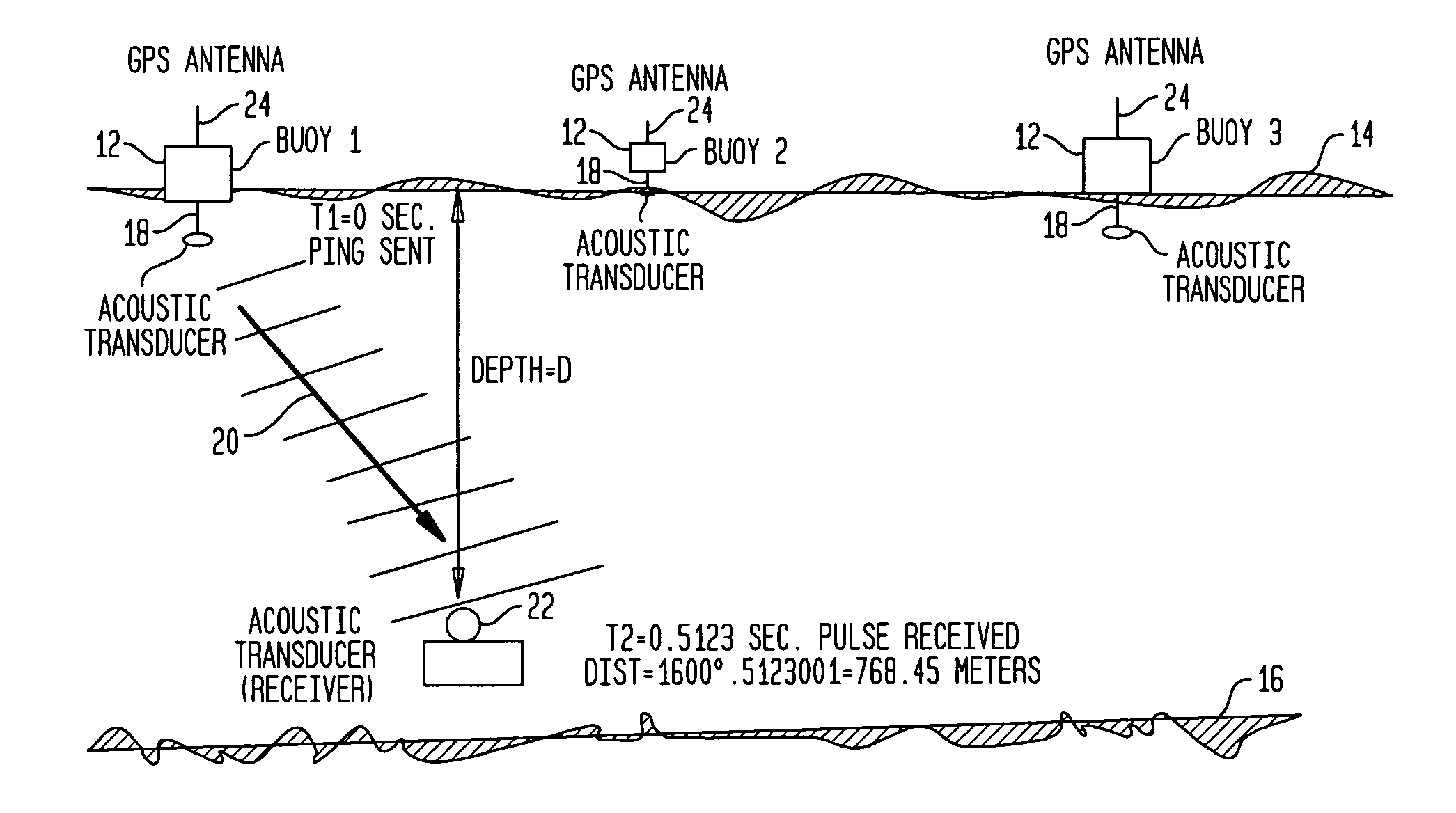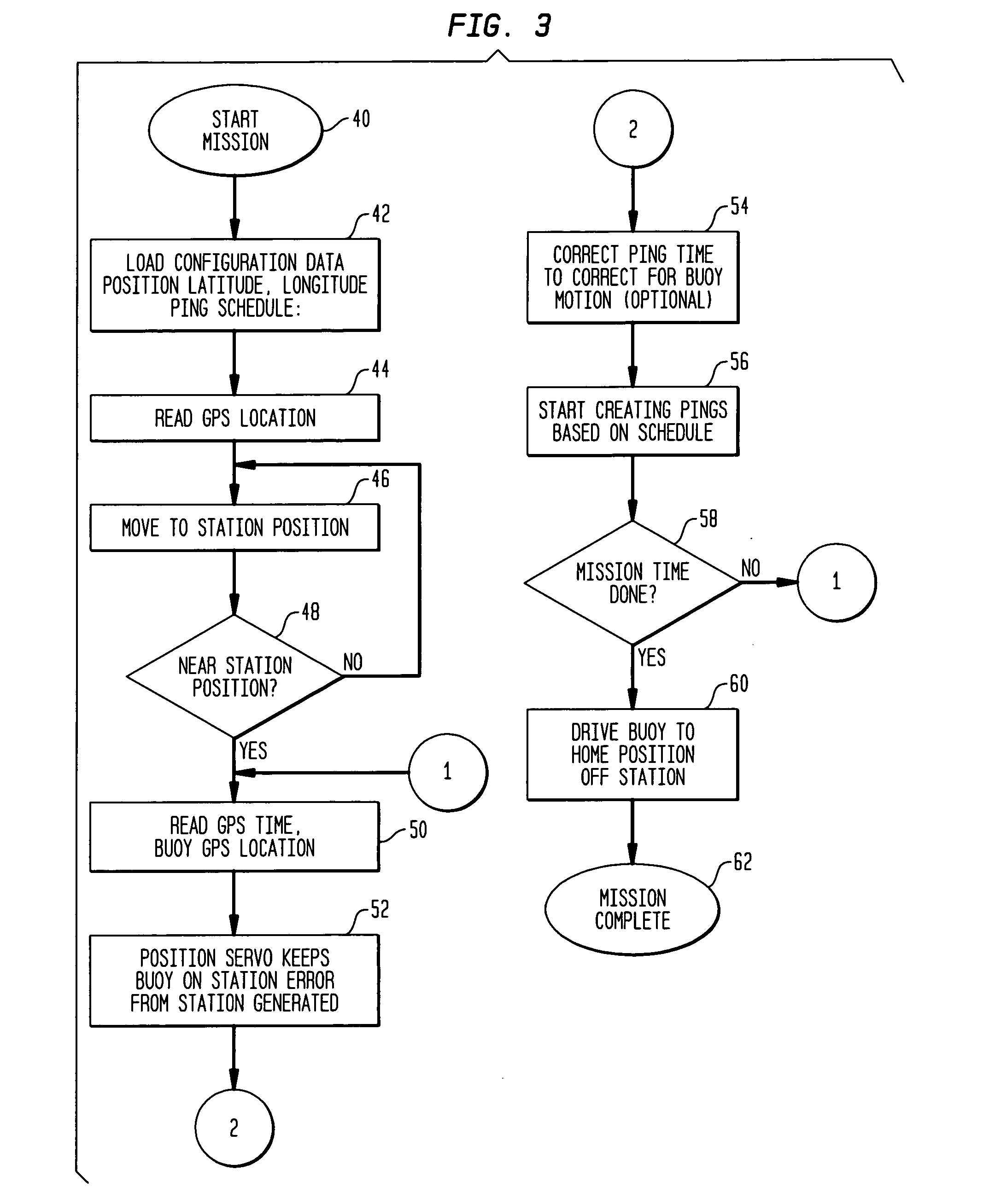Underwater acoustic positioning system and method
a positioning system and underwater technology, applied in direction finders, direction finders using ultrasonic/sonic/infrasonic waves, instruments, etc., can solve the problems of limiting the amount of dtls that can participate in the scheme, increasing the complexity and power consumption of the dtls system, and the radio-based system cannot be directly used underwater. , to achieve the effect of improving the reliability of positioning systems and methods, reducing the acoustic bandwidth, and reducing the cost of
- Summary
- Abstract
- Description
- Claims
- Application Information
AI Technical Summary
Benefits of technology
Problems solved by technology
Method used
Image
Examples
Embodiment Construction
[0030] The present invention provides a method and apparatus for locating an accurate 3-dimensional position of an underwater device or vehicle using an acoustic signaling method and a stabilized time base. The stabilized time base can be provided on the device to locate using a stabilized clock. If the depth of the device to locate (DTL) is known, the system requires at least two spatially separated acoustic transmitters (buoys) in fixed locations on the surface of the water. These buoys are referred to as station keeping buoys. An alternative scheme would allow the buoys to be fixed underwater at a known location, not subject to the position error when they are floating, the time base for such a station keeping buoy could be provided by a floating GPS receiver on a cable (GPS time would only be available through the cable) or a stabilized clock such as used in the DTLs. The time on the buoys could also be updated by cable, by coming to the surface from time to time, or some other ...
PUM
 Login to View More
Login to View More Abstract
Description
Claims
Application Information
 Login to View More
Login to View More - R&D
- Intellectual Property
- Life Sciences
- Materials
- Tech Scout
- Unparalleled Data Quality
- Higher Quality Content
- 60% Fewer Hallucinations
Browse by: Latest US Patents, China's latest patents, Technical Efficacy Thesaurus, Application Domain, Technology Topic, Popular Technical Reports.
© 2025 PatSnap. All rights reserved.Legal|Privacy policy|Modern Slavery Act Transparency Statement|Sitemap|About US| Contact US: help@patsnap.com



